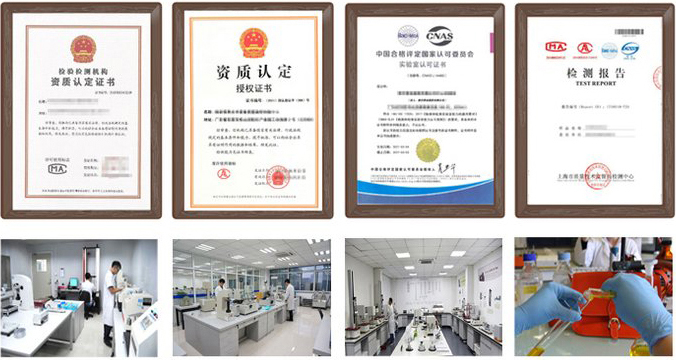Chavicol DetectionHow to apply for a report? What items need to be tested? We will conduct testing and evaluation in strict accordance with the standards. We can also provide personalized testing plans and reports according to your needs.
The detection method of Chavicol usually involves the comprehensive use of multiple analytical techniques instruments and equipment. The following are some common chavicol detection methods and their related introductions:
1. High-Performance Liquid Chromatography (HPLC)
High-Performance Liquid Chromatography is one of the commonly used methods for chavicol detection. This method separates the sample through a chromatographic column and uses a detector to detect the separated components. The specific steps are as follows:
Sample preparation: The sample to be tested is properly pretreated, such as dissolving, diluting, etc., to ensure that it is suitable for high-performance liquid chromatography analysis.
Chromatographic condition setting: Select appropriate chromatographic columns, mobile phases, flow rates, column temperatures, and other parameters to ensure that the chavicol in the sample can be effectively separated and detected.
Injection and detection: The sample is injected into the high-performance liquid chromatograph for separation and detection. By recording the chromatogram and peak area or peak height, the content of chavicol in the sample can be calculated.
2. Gas Chromatography (GC)
Gas chromatography is also one of the commonly used methods for chavicol detection, especially for the analysis of volatile components. This method separates the sample through a gas chromatographic column and uses a detector to detect the separated components. The following is a specific example of gas chromatography to determine the content of methyl chavicol in Patchouli:
Chromatographic column selection: Use a suitable chromatographic column such as the DB-5 quartz capillary column.
Chromatographic condition setting: Set parameters such as injection port temperature, detector temperature, flow rate, carrier gas, etc. For example, the injection port temperature is set to 230℃, the detector temperature is set to 300℃, the flow rate is 1.0 mL/min, and the carrier gas is nitrogen.
Sample preparation and injection: The sample to be tested is properly pretreated, such as dissolving, diluting, etc., and injected into the gas chromatograph for separation and detection.
Data processing: According to the chromatogram and peak area or peak height, the content of methyl chavicol in the sample can be calculated.
3. Other methods
In addition to high-performance liquid chromatography and gas chromatography, there are some other methods that can be used for the detection of chavicol, such as:
Ultraviolet spectrophotometry: Quantitative determination is performed using the absorbance of chavicol at a specific wavelength. This method is simple to operate but may be interfered with by other coexisting substances.
Infrared spectroscopy: Qualitative analysis is performed by measuring the characteristic peaks of the infrared spectrum of Chavicol. This method is suitable for preliminary identification of the structure of chavicol.
Electrochemical methods: Such as polarography, voltammetry, etc., can also be used for the detection of chavicol. These methods usually have high sensitivity and selectivity.
IV. Precautions
When performing chavicol detection, the following points need to be noted:
Sample processing: Ensure that no contamination and errors are introduced during sample processing to ensure the accuracy of the test results.
Instrument calibration: Regularly calibrate and maintain the detection instrument to ensure its stable and reliable performance.
Method validation: Before conducting formal testing, the detection method needs to be validated and optimized to ensure that it is suitable for the sample to be tested and the test requirements.
Data recording and processing: Record the data and results of the test process in detail, and perform appropriate processing and analysis to draw accurate conclusions.
In summary, there are many methods for detecting chavicol, and the specific method to be selected depends on factors such as the nature of the sample to be tested, the test requirements, and the laboratory conditions. In practical applications, the method should be selected and optimized according to the specific situation.
Test report function
1、Project bidding: issue authoritative third-party CMA/CNAS qualification report;
2、E-commerce platform entry: quality inspection reports recognized by major e-commerce platforms;
3、Used as sales report: issuing a test report with legal effect to make consumers feel more at ease;
4、Papers and scientific research: providing professional and personalized testing needs;
5、Judicial services: providing scientific, fair and accurate testing data;
6、Industrial problem diagnosis: verifying the troubleshooting and correction of problems in industrial production;


 National free customer service telephone 400-101-7153
National free customer service telephone 400-101-7153 

